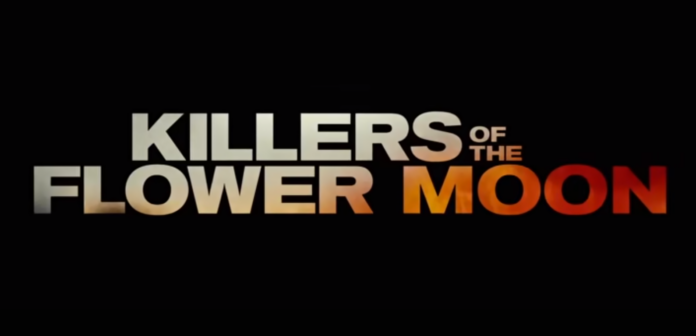
The sickness spreads slowly, it doesn’t matter where you picked it up, what matters is that it’s in you.
Killers of the Flower Moon is about sickness, it corrodes and consumes its characters, rendering friendly folk monstrosity. Corrupting or destroying all those in proximity to its rot.
Killers of the Flower Moon details a simple story: members of the Osage nation have come into possession of a massive amount of oil in Oklahoma, turning them into the richest people per capita on North American soil. From there, members of the tribe are picked off one by one, brutalized bodies are left behind with little to no investigation. The film works as an antithesis to the western genre, a complete demystification of narratives surrounding violence, race, power and wealth. Its complicated story, rich with stunning compassion, grueling brutality and pitch-black humor, unfolds over the three and a half hour runtime. It rips away at preconceived notions on how racism operates, where evil comes from and what exactly leads everyday people to being complicit agents in ruthless genocide.
Despite Director Martin Scorsese’s reputation as a filmbro’s filmmaker, Killers of the Flower Moon is a portrait of a subtle evil, almost always keeping the audience ever so slightly in the dark about the true events and its characters’ motivations. It only ever really hints at the greater picture with repeated lines, lingering looks and abstract imagery are all the clues we get. Brief moments depicting a sheriff in the Klan, apathetic doctors and coded language illuminate the horror at the story’s core, even if only slightly.
Killers of the Flower Moon shows that the reason behind colonial genocide is not some great nationalistic spirit, nor an obsession with racial superiority — it’s capital. It’s the nihilistic drive to accumulate all one can, no matter how self-immolating. Committing atrocity after atrocity, all while claiming to be an ally to those affected. One of the cruelest characters, who orchestrates some of the most horrific acts in the film, regularly considers himself a friend of the Osage people. He knows their language, their practices and culture, he’s friends with almost everyone in town and regularly attends council meetings. He is not driven by a hatred of those he deems lesser, he’s driven by a simple lust for consumption. To create an ever-growing, fascistic and hegemonic machine of wealth production, one that ultimately proves unsustainable.
Lily Gladstone helms an incredibly powerful performance as Mollie Berkhart, an analytical Osage woman in possession of an oil fortune looking into the uninvestigated deaths that have plagued her community. Leonardo DiCaprio is also great as Ernest Berkhart, who is just the most pathetic little wet towel of a man, a ball of shame and guilt and nonstop brown-furrowed frowning and De Niro is great as the charming, well-read, apathetic, imperialist worm William King Hale.
The script, acting and direction repeatedly draw the audience into these characters and communities amidst beautiful pastoral landscapes and the setting sun of the American west. This atmosphere is disrupted by sudden explosions and terrifying violence. Each death is genuinely horrific, they are always telegraphed, yet as the body count rises, so does the dread. The atmosphere becomes caustic, poisoning and suffocating its characters.
In the cracks of Killers of the Flower Moon, however, remains a glimpse of hope. There is no justice of course and much of the story is understandable and necessarily bleak, but there is still community. A community that is repeatedly shattered and beaten down and gaslit, but still survives. There is suffering, but there is solidarity.
A great American epic, a tragic revisionist western where nothing remains when the dust fades, just rotting flesh and dead dreams.
